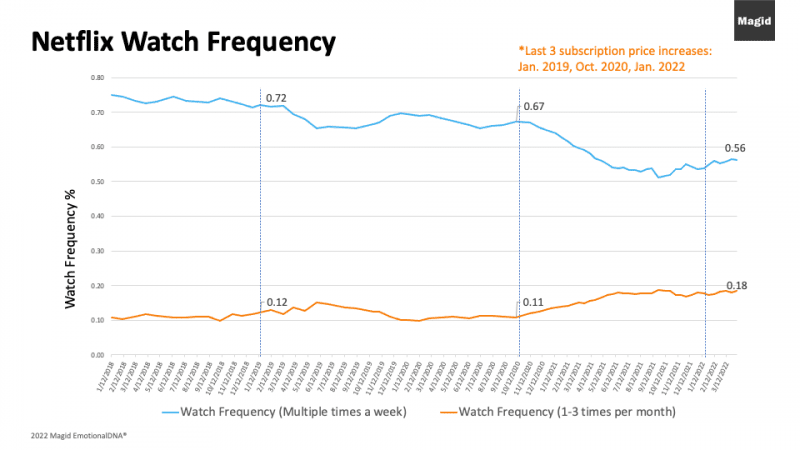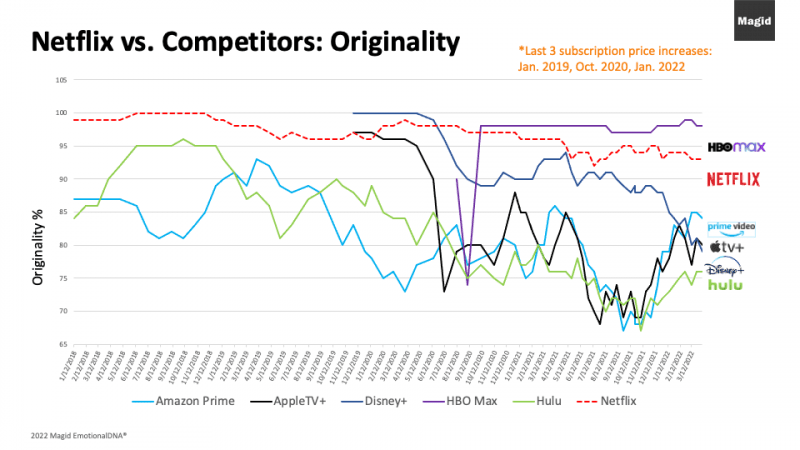The changing perceptions of Netflix
With the news that Netflix is starting to lose subscribers after its most recent fee hike, while its stock plummets and it hints at a crackdown on password sharing, we decided to take a look at the platform through the lens of EmotionalDNA® metrics to see how viewers’ perception of Netflix has changed over the years. Since 2014, eDNA has measured emotional perceptions of content and platforms, analyzing how audiences feel about the shows and networks they watch. Clients use the eDNA dataset to identify the emotional profile of their content and platforms for content strategy, development, scheduling, licensing, whitespace identification, and more.
The price of a standard Netflix subscription has increased no fewer than six times since 2014, now making it the priciest streaming service (with HBO Max at a close second). Conversely, Netflix’s library of movies has shrunk dramatically since 2014, limiting not only the quantity but also the quality of its offerings to loyal subscribers. Its lack of large franchises, coupled with the speed at which it’s willing to cancel shows it doesn’t deem an instant hit, are serving to curtail this already dwindling library. Add in a slew of competitive streaming offerings that will only increase over time, and you have a constantly evolving landscape over which Netflix may struggle to maintain its past stronghold.
Taking a look at eDNA’s watch frequency metric for Netflix over the past four years, while noting the past few price increases, it is not surprising to see that the percentage of eDNA respondents who say they watch Netflix multiple times a week has seen a steady decline, while the segment of casual viewers (who watch it 1-3 times per month) is seeing growth.
Netflix has also shown a steady decline in eDNA’s Originality dimension scores. More specifically, perceptions of shows and movies that score high for Imaginative and Intelligent attributes (those that greatly contribute to Originality) have been surpassed by content on HBO Max. This all-time low in Originality denotes a symptom of a larger issue for Netflix: the bar is high for quality content – a bar that was initially set by this very streaming platform.
Shows that have driven viewership in the past, such as Stranger Things, Ozark and Bridgerton, are no longer garnering the same Incidence (eDNA’s reach metric) scores they once did; even a hit like Squid Games was unable to hit the levels of prior Stranger Things seasons. As the playing field has gotten more crowded with various options, viewers have scattered. The choices are vast and the competition is stiff. Although Netflix still holds a strong market position, it would be wise for the streaming giant to take a look inward at the quality of their library and acquisitions – along with its plans to combat password sharing.



